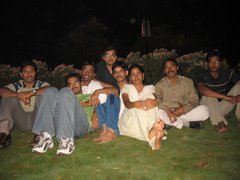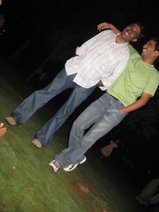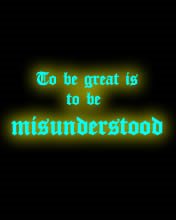Bluetooth is the latest in technology social conversation. Bluetooth  maybe
maybe
technology but it provides a way to communicate between other devices such as PDA's, cell phones, laptops, PCs, printers and digital camerasthrough a short range radio frequency.
A Scandinavian firm originally designed the logo at the time the SIG was formally introduced to the public. Keeping to the same origin as the Bluetooth name, the logo unites the Runic alphabetic characters "H", which looks similar to an asterisk, and a "B", which are the initials for Harald Bluetooth. If you look close enough you can see both embodied in the logo.
A long time ago (historians differ on the exact dates, but it was sometime in the 10th Century C.E.) in a country far, far away, (which was mostly Denmark, with a little bit of Norway added in for flavor,) there lived a Viking king who was principally noted for converting to a foreign religion called Christianity.....
 Harald I Bluetooth (Danish Harald Blåtand) was the King of Denmark between 940 and 985 AD. The name "Blåtand" was probably taken from two old Danish words, 'blå' meaning dark skinned and 'tan' meaning great man. He was born in 910 as the son of King Grom The Old (King of Jutland, the main peninsula of Denmark) and his wife Thyre Danebold (daughter of King Ethelred of England). Like many Vikings, Harald considered it honorable to fight for treasure in foreign lands. When Harald's sister Gunhild was widowed after the death of the violent Norwegian king Erik Blood Axe, she came to Denmark to seek Harald's help in securing control of Norway. Harald took the opportunity to seize control himself. By 960 he was at the height of his powers, ruling over both Denmark and Norway. He was baptized by a priest named Poppo, sent by the German emperor. He then created a monument that read: "King Harald raised this monument to the memory of Grom his father and Thyre his mother. Harald conquered all of Denmark and Norway and made the Danes Christian". These words were also carved in stone called rune stones. Harald was killed in a battle in 985. Harald completed the country's unification begun by his father, converted the Danes to Christianity, and conquered Norway. The expansion begun by Harald in Norway was continued by his son Sweyn I, who conquered England in 1013. Under Sweyn's son Canute there grew up a great Anglo-Scandinavian kingdom that included parts of Sweden.
Harald I Bluetooth (Danish Harald Blåtand) was the King of Denmark between 940 and 985 AD. The name "Blåtand" was probably taken from two old Danish words, 'blå' meaning dark skinned and 'tan' meaning great man. He was born in 910 as the son of King Grom The Old (King of Jutland, the main peninsula of Denmark) and his wife Thyre Danebold (daughter of King Ethelred of England). Like many Vikings, Harald considered it honorable to fight for treasure in foreign lands. When Harald's sister Gunhild was widowed after the death of the violent Norwegian king Erik Blood Axe, she came to Denmark to seek Harald's help in securing control of Norway. Harald took the opportunity to seize control himself. By 960 he was at the height of his powers, ruling over both Denmark and Norway. He was baptized by a priest named Poppo, sent by the German emperor. He then created a monument that read: "King Harald raised this monument to the memory of Grom his father and Thyre his mother. Harald conquered all of Denmark and Norway and made the Danes Christian". These words were also carved in stone called rune stones. Harald was killed in a battle in 985. Harald completed the country's unification begun by his father, converted the Danes to Christianity, and conquered Norway. The expansion begun by Harald in Norway was continued by his son Sweyn I, who conquered England in 1013. Under Sweyn's son Canute there grew up a great Anglo-Scandinavian kingdom that included parts of Sweden.
Old Harald Bluetooth united Denmark and Norway, Bluetooth of today will unite the worlds of computers and telecom (hopefully longer than the few years Harald's Viking kingdom survived). In 1994 Ericsson Mobile Communications initiated a study to investigate the feasibility of a low-power low-cost radio interface between mobile phones and their accessories. In Feb 1998, five companies Ericsson, Nokia, IBM, Toshiba and Intel formed a Special Interest Group (SIG). The group contained the necessary business sector members - two market leaders in mobile telephony, two market leaders in laptop computing and a market leader in digital signal processing technology. It is estimated that before year 2002, Bluetooth will be a built-in feature for more than 100 million mobile phones and several million communication devices ranging from handsets and portable PCs to desktop computers and notebooks.
computers and telecom (hopefully longer than the few years Harald's Viking kingdom survived). In 1994 Ericsson Mobile Communications initiated a study to investigate the feasibility of a low-power low-cost radio interface between mobile phones and their accessories. In Feb 1998, five companies Ericsson, Nokia, IBM, Toshiba and Intel formed a Special Interest Group (SIG). The group contained the necessary business sector members - two market leaders in mobile telephony, two market leaders in laptop computing and a market leader in digital signal processing technology. It is estimated that before year 2002, Bluetooth will be a built-in feature for more than 100 million mobile phones and several million communication devices ranging from handsets and portable PCs to desktop computers and notebooks.
Bluetooth Core Specification Versions:
technology but it provides a way to communicate between other devices such as PDA's, cell phones, laptops, PCs, printers and digital camerasthrough a short range radio frequency.
A Scandinavian firm originally designed the logo at the time the SIG was formally introduced to the public. Keeping to the same origin as the Bluetooth name, the logo unites the Runic alphabetic characters "H", which looks similar to an asterisk, and a "B", which are the initials for Harald Bluetooth. If you look close enough you can see both embodied in the logo.
A long time ago (historians differ on the exact dates, but it was sometime in the 10th Century C.E.) in a country far, far away, (which was mostly Denmark, with a little bit of Norway added in for flavor,) there lived a Viking king who was principally noted for converting to a foreign religion called Christianity.....
 Harald I Bluetooth (Danish Harald Blåtand) was the King of Denmark between 940 and 985 AD. The name "Blåtand" was probably taken from two old Danish words, 'blå' meaning dark skinned and 'tan' meaning great man. He was born in 910 as the son of King Grom The Old (King of Jutland, the main peninsula of Denmark) and his wife Thyre Danebold (daughter of King Ethelred of England). Like many Vikings, Harald considered it honorable to fight for treasure in foreign lands. When Harald's sister Gunhild was widowed after the death of the violent Norwegian king Erik Blood Axe, she came to Denmark to seek Harald's help in securing control of Norway. Harald took the opportunity to seize control himself. By 960 he was at the height of his powers, ruling over both Denmark and Norway. He was baptized by a priest named Poppo, sent by the German emperor. He then created a monument that read: "King Harald raised this monument to the memory of Grom his father and Thyre his mother. Harald conquered all of Denmark and Norway and made the Danes Christian". These words were also carved in stone called rune stones. Harald was killed in a battle in 985. Harald completed the country's unification begun by his father, converted the Danes to Christianity, and conquered Norway. The expansion begun by Harald in Norway was continued by his son Sweyn I, who conquered England in 1013. Under Sweyn's son Canute there grew up a great Anglo-Scandinavian kingdom that included parts of Sweden.
Harald I Bluetooth (Danish Harald Blåtand) was the King of Denmark between 940 and 985 AD. The name "Blåtand" was probably taken from two old Danish words, 'blå' meaning dark skinned and 'tan' meaning great man. He was born in 910 as the son of King Grom The Old (King of Jutland, the main peninsula of Denmark) and his wife Thyre Danebold (daughter of King Ethelred of England). Like many Vikings, Harald considered it honorable to fight for treasure in foreign lands. When Harald's sister Gunhild was widowed after the death of the violent Norwegian king Erik Blood Axe, she came to Denmark to seek Harald's help in securing control of Norway. Harald took the opportunity to seize control himself. By 960 he was at the height of his powers, ruling over both Denmark and Norway. He was baptized by a priest named Poppo, sent by the German emperor. He then created a monument that read: "King Harald raised this monument to the memory of Grom his father and Thyre his mother. Harald conquered all of Denmark and Norway and made the Danes Christian". These words were also carved in stone called rune stones. Harald was killed in a battle in 985. Harald completed the country's unification begun by his father, converted the Danes to Christianity, and conquered Norway. The expansion begun by Harald in Norway was continued by his son Sweyn I, who conquered England in 1013. Under Sweyn's son Canute there grew up a great Anglo-Scandinavian kingdom that included parts of Sweden.Old Harald Bluetooth united Denmark and Norway, Bluetooth of today will unite the worlds of
 computers and telecom (hopefully longer than the few years Harald's Viking kingdom survived). In 1994 Ericsson Mobile Communications initiated a study to investigate the feasibility of a low-power low-cost radio interface between mobile phones and their accessories. In Feb 1998, five companies Ericsson, Nokia, IBM, Toshiba and Intel formed a Special Interest Group (SIG). The group contained the necessary business sector members - two market leaders in mobile telephony, two market leaders in laptop computing and a market leader in digital signal processing technology. It is estimated that before year 2002, Bluetooth will be a built-in feature for more than 100 million mobile phones and several million communication devices ranging from handsets and portable PCs to desktop computers and notebooks.
computers and telecom (hopefully longer than the few years Harald's Viking kingdom survived). In 1994 Ericsson Mobile Communications initiated a study to investigate the feasibility of a low-power low-cost radio interface between mobile phones and their accessories. In Feb 1998, five companies Ericsson, Nokia, IBM, Toshiba and Intel formed a Special Interest Group (SIG). The group contained the necessary business sector members - two market leaders in mobile telephony, two market leaders in laptop computing and a market leader in digital signal processing technology. It is estimated that before year 2002, Bluetooth will be a built-in feature for more than 100 million mobile phones and several million communication devices ranging from handsets and portable PCs to desktop computers and notebooks.Bluetooth Core Specification Versions:
Bluetooth Specification Version 1.1 and Earlier: Several Bluetooth specification versions have been released since Bluetooth technology was introduced in 1998.
Versions 1.0 and 1.0B had too many problems and restraints for manufacturers to successfully develop Bluetooth devices. The main issue was the lack of interoperability among devices.
Bluetooth Version 1.2: Many new Bluetooth devices, like the latest cell phones, are being sold with the newer Bluetooth specification version 1.2. So, what new features/benefits does Bluetooth 1.2 offer?
- Backward compatible with Bluetooth 1.1
- Adaptive Frequency Hopping - helps reduce radio interference by eliminating the use of crowded frequencies in the hopping sequence
- Faster transmission speeds (1 Mbps)
- Extended Synchronous Connections Oriented links - improves voice quality of audio connections by enabling retransmissions of corrupted data.
- Received Signal Strength Indicator
- Host Controller Interface (HCI) support for 3-wire UART
- HCI access to timing information for Bluetooth applications
Bluetooth Version 2.0 + EDR (Enhanced Data Rate): There may be multiple communication technologies, but they all share one thing in common: Faster is better. The Bluetooth SIG realized this, and worked on improving the speeds of Bluetooth version 1.2. Bluetooth version 2.0 + EDR was announced by the Bluetooth SIG in June 2004 and began appearing in Bluetooth devices in late 2005.




No comments:
Post a Comment